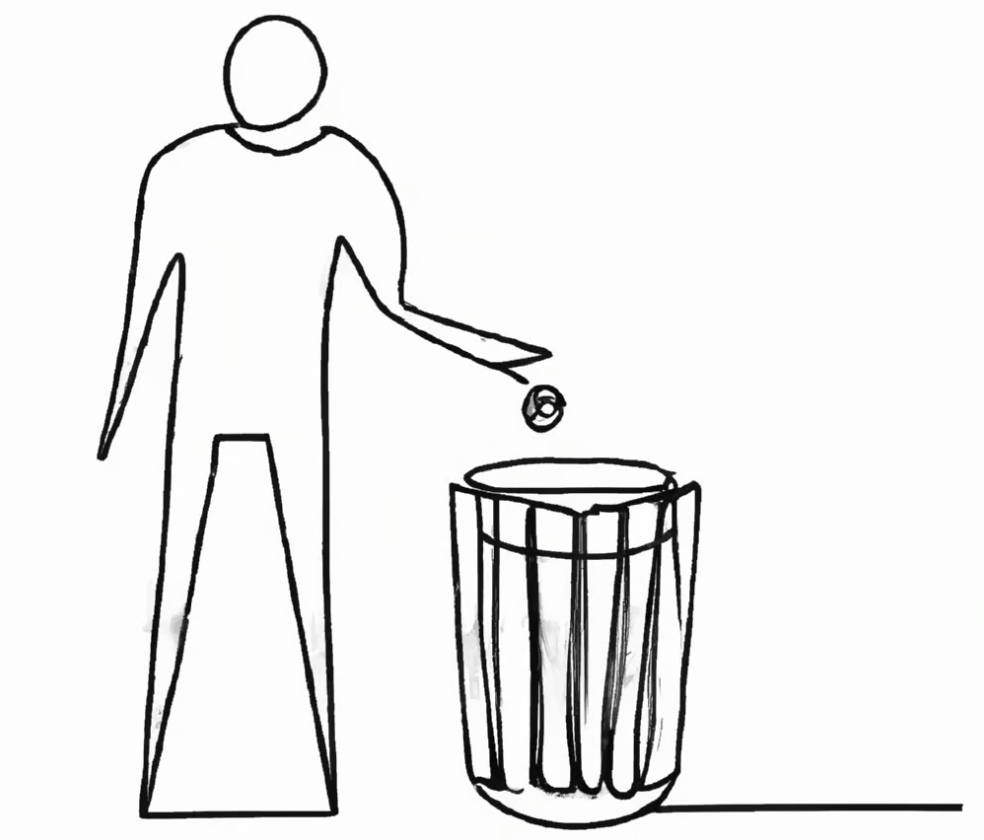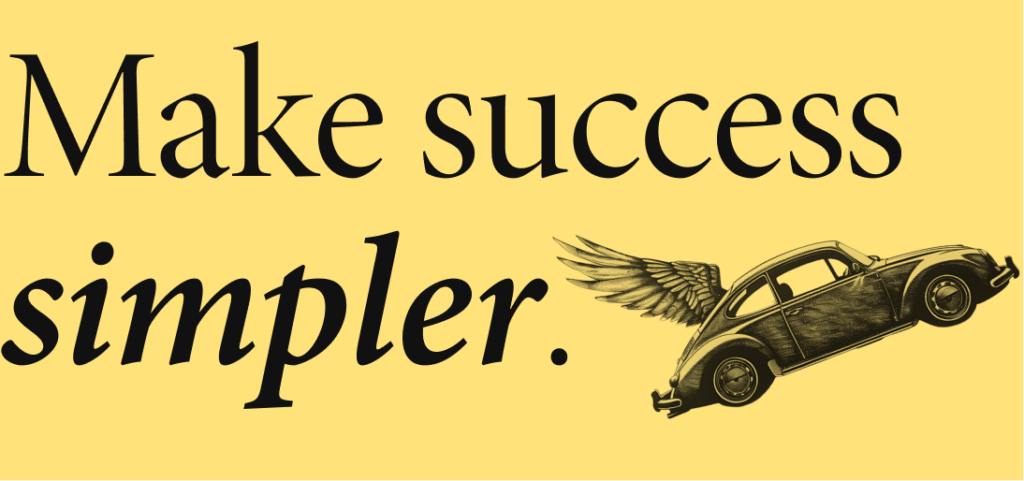Welcome to One Thing Better. Each week, the editor in chief of Entrepreneur magazine (that’s me) shares one way to level up — and build a career or company you love.
Today’s one thing: Needing something different
That one thing, better: Doing the same thing — but differently.

Something isn’t working.
Maybe your job is unsatisfying. Or your business is flailing. Or your relationship is struggling. Or your project is faltering.
You’re wondering: Should I throw this away and start over?
Maybe! But before you do, it’s worth asking:
What if the whole thing isn’t broken? What if just part of it is broken? And what if the solution isn’t doing something new — but instead, just doing your current thing in a new way?
Today, I’ll help you figure that out.
Let’s start with an example.
An entrepreneur recently told me: “I think I need a new business partner.”
I asked why. She had a litany of reasons, but they all boiled down to this: Their personalities and working styles are too different. As a result, wires kept getting crossed. Simple projects became complex.
The result of this wasn’t bad, necessarily. They aren’t cofounders; they’re just partner on one project. And that project has done well! It’s made money! But it’s also been stressful and distracting.
So the entrepreneur asked me: Should she break up this partnership? It felt necessary, but also overwhelming. How does she do it? When does she do it? What happens next for the project?
As we talked, she realized a surprising answer: She does not need a new partner at all!
But she does need something new…
What kind of “new” do you need?
We’re going to answer that question in a moment. But first, related:
Have you ever watched the TV show Love It or List It?

On its face, it’s just another HGTV home renovation show. But it’s also a great experiment in human behavior.
The setup is this: A family is unhappy with their current house, usually because they’ve outgrown it. So a competition is created. The family is shown new homes within their budget, while their old home is renovated to address their problems.
Then they must decide: Do they stay in their spruced-up home, or do they move?
Usually, they stay.
Why? Well, consider their cost-benefit analysis. Before the family’s house was renovated, they were basically asking themselves this:
Which is worse: The disruption of moving, or living in a house that no longer serves our needs?
Then… renovation! Room sizes are adjusted. Basements become home offices. The cost-benefit starts to look like this:
Which is worse: The disruption of moving, or living in a house that better serves our needs?
No wonder most of them stay.
When you think of it this way, renovations are a kind of magic — because these people didn’t just fix up a house. Instead, they separated the parts that didn’t work from the parts that still work.
Now let’s do that for you.
Which parts don’t work?
We know when something is wrong. But we don’t often know what part of something is wrong — which means we feel like all of it is wrong.
The unsatisfying job. The flailing business. The struggling relationship. These things seem broken, which means they must be discarded.
And like I said earlier, maybe they should be discarded! But there’s a cost to starting fresh. You must find a new person, develop a new system, learn a new skill — whatever it is. So before you pay that cost, it’s worth exploring whether you really need to.
Think about the thing that’s not working for you. Now ask these four questions:
1. What about this works well?
2. What about this doesn’t work?
3. What does it take to fix the broken parts?
4. Is fixing the broken parts better than replacing the whole thing?
New to this newsletter? Subscribe!
To see that in action, let’s go back to the entrepreneur who wanted to leave her business partner.
I’ll ask the questions again:
1. What about this works well?
She realized that a lot of it works well. The partner is very capable and smart, and they’ve done good deals together.
2. What about this doesn’t work?
At first, she thought the problem was their different working styles. But then she remembered — she chose this partner because they had different working styles!
The entrepreneur is very relationships-oriented, and so she wanted to partner with someone who’s a more aggressive dealmaker. And that’s worked to her benefit.
The problem, she realized, wasn’t working styles. It was understanding. Because the entrepreneur didn’t understand her partner’s motivations, she didn’t trust the decisions her partner was making.
3. What does it take to fix the broken parts?
The entrepreneur decided to have a frank conversation with her partner. They talked about their different styles and needs, and why they approached past decisions the way they did.
“It was so productive,” the entrepreneur told me. “We’re very different people, and I’m not interested in changing that. But we have complimentary skillsets, and we can work well together.”
4. Is fixing the broken parts better than replacing the whole thing?
Before that conversation, the entrepreneur had a cost-benefit analysis: Yes, switching business partners would suck — but it was better than maintaining this stressful relationship.
But after she identified the part of the relationship that didn’t work, and then addressed it, her cost-benefit changed.
“I just feel so much lighter!” she told me. “I don’t have to do all this crap I was planning on doing! I can now just kick back a little bit and not worry about this.”
She didn’t need a new business partner. Instead, she needed a new version her old business partner — and she got it.
I talk to a lot of people who navigate transitions. Many of them come to a similar conclusion. Instead of needing a new thing, they just need to do the old thing differently. And if that works for you, it is a wonderful thing. It saves you time and energy. It allows you to build on top of strong foundations.
So as you think about this for yourself, here’s one final question to ask:
Are you maximizing what you have?

Here’s an example of what I mean…
Kevin owns a gym. It’s busy. It’s successful. So he went to a business consultant — my friend Adam Bornstein — and asked a question that many business owners ask:
Should I open a second location?
Adam’s response was this: “How often does your current gym run at maximum profitability?”
Kevin dug into his books and came back with an answer: It happens about 10% of the week.
Whoa. Kevin’s gym seems busy, but it’s very rarely earning all the money it could. So Adam asked another question: “Can you make your gym more profitable — without adding space?”
“Opening a new location seems like a hard move, but it’s really the easy way out,” Adam wrote in Entrepreneur, when he shared this story. “That’s because, even though it’s a big and risky investment, it’s predictable. A guy like Kevin knows how to open a new location, because he already opened the old one. The harder work comes from looking inward and rethinking how you do business. There’s risk there, too, of course. But the payoff is far greater.”
Adam’s advice always stuck with me.
Making big changes sounds big and scary — but what if, sometimes, the big change is actually taking the easy way out? Don’t like something? Toss it aside! And again, to be clear: Sometimes we must do exactly that. Sometimes something is broken beyond repair.
But sometimes, only a part of something is broken. Fixing it requires difficult, precise work. It requires honest conversations, like the entrepreneur had with her business partner. It requires careful attention. It requires care. And if we are willing to do that hard work, then the benefits are great:
We get to keep what’s working — and make it work even more.
That’s how to do one thing better.
